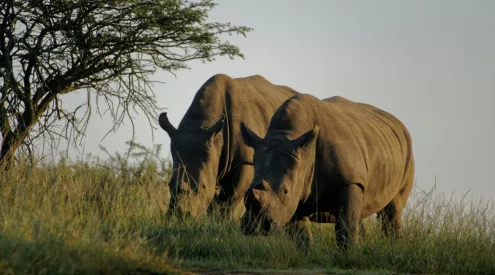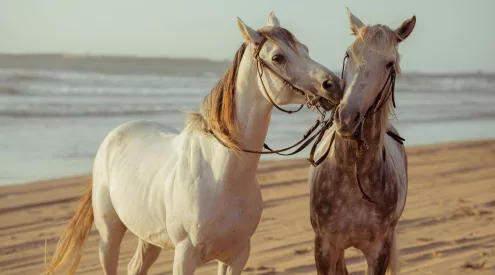Hainan gibbons are the world’s rarest primates because they have been driven to the edge of extinction by humans. These primates are critically endangered with an estimated 25-30 individuals left in the world.
Deforestation, poaching, hunting and the illegal pet trade have all contributed to their demise over the past five decades.
Gibbons are endemic to the forests of China’s Hainan island and they rarely leave the safety of the tree tops to visit the ground.
A landslide in 2014 tore a gap between the forest’s canopy and rendered the gibbons unable to move freely, find food or a mate. The primates would risk their lives leaping across the gap, a risk these creatures cannot afford to take.
Conservationists have come up with a temporary solution to the problem: A rope bridge or swing.
Tethering the trees together with an 18m-long rope, this will act as a measure for the animals to move about without risking the 30m drop. The plan took six months for the gibbons to get used to, according to New Scientist.
Some of the gibbons have been seen swinging across the rope, crawling upside down or balancing on it like a tightrope. Larger males, however, have not made use of the rope and rather make the jump themselves.
‘It was pretty scary to watch – my heart just popped out of my throat,’ said Dr Bosco Chan at the Kadoorie Farm & Botanic Garden in Hong Kong to New Scientist. ‘If the infant-carrying mother falls, that would have been two down out of 25,’ said Dr Chan.
Speaking to BBC News, Dr Chan said that when his work on the reserve began in 2003, only two groups of gibbons were located with a total number of 13 individuals.
‘The gibbon population has gradually recovered, with a third and fourth family group formed in 2011 and 2015, respectively.
‘At the beginning of 2020, we confirmed the formation of the fifth group, and the world population has bounced back to over 30 individuals. It shows the species is slowly recovering, and we should have hope,’ he said.
View this post on Instagram
Image: Instagram

















